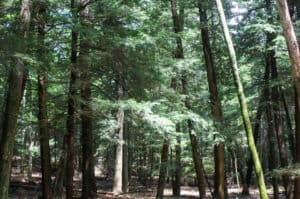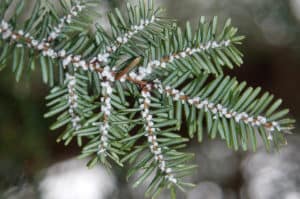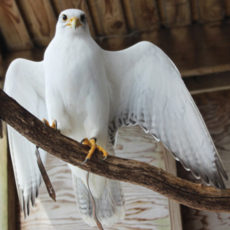Announcements

Sunday, August 26, 2018
10:00am - 12:00pm
The Eastern hemlock is an important tree in North American forests, best known for the ecosystem services provided by its dense canopy. Hemlock trees are under attack from an invasive insect known as the Hemlock Wooly Adelgid (HWA). Infecting and killing tree after tree, HWA has resulted in the death of millions of hemlocks across the Eastern United States. The rapid loss of this once-prominent tree has led to significant changes in the quality of our forests.
 Little is currently known about the timing of HWA life stages, their phenology, across New York State. Observing HWA phenology is critical to the release of biocontrol methods to manage infestations throughout New York. Data collected by citizen scientists, community members like you, tells land managers where and when to perform biocontrol and allows them to track HWA response to different climate factors in the field.
Little is currently known about the timing of HWA life stages, their phenology, across New York State. Observing HWA phenology is critical to the release of biocontrol methods to manage infestations throughout New York. Data collected by citizen scientists, community members like you, tells land managers where and when to perform biocontrol and allows them to track HWA response to different climate factors in the field.
 In this training, join an experienced field technician from the New York State Hemlock Initiative (NYSHI) as they guide you through the annual phenology of Hemlock Woolly Adelgid. Learn how to identify HWA in the field during all times of year and how you can gather data to improve biocontrol research in New York.
In this training, join an experienced field technician from the New York State Hemlock Initiative (NYSHI) as they guide you through the annual phenology of Hemlock Woolly Adelgid. Learn how to identify HWA in the field during all times of year and how you can gather data to improve biocontrol research in New York.
The training will begin with a short indoor presentation at Green Chimneys’ Clearpool Campus Learning Center and take us outside to learn how to identify this insect in the field. The outdoor component includes a 20-minute hike over moderately difficult terrain; appropriate footwear is encouraged. Please be mindful of physical limitations before registering for this workshop. No prior experience monitoring species is necessary to participate.
This workshop is organized in collaboration with Cornell University, the New York State Hemlock Initiative and Green Chimneys’ Clearpool Model Forest programming.
NYSHI is part of the National Phenology Network which utilizes the Nature’s Notebook smartphone app to collect data in the field. This makes it easier than ever to observe the timing of HWA’s major life stages and contribute to a crucial conservation project.
Contact Matt Smetana, Model Forest Facilitator at [email protected] or 845.216.0239

Crowned the best for falconry in medieval times, gyrfalcons were once reserved for kings. As the largest falcon in the world, with exquisite plumage ranging from bright white to deep charcoal, gyrs are revered for their powerful skill of flight. Their long wings make hunting waterfowl from 3,000-feet-high a feasible and fantastical feat. This falcon was flown in the sport of falconry for several years.